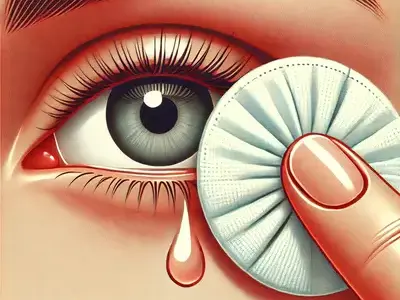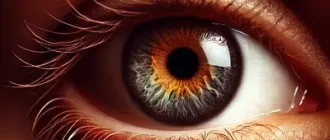Eyelid bumps, commonly referred to as styes or chalazion, are annoying and sometimes painful conditions that can disrupt daily life. Fortunately, they’re usually manageable with proper care. This guide covers the causes, symptoms, and most effective treatments to help you safely remove an eyelid bump and prevent recurrence.
Effectiveness of Treatments for Eyelid Bumps
This chart highlights the effectiveness of various treatments for eyelid bumps, with professional interventions and warm compresses rated highest. It provides a clear view of treatment outcomes to guide care decisions.
What Is an Eyelid Bump?
An eyelid bump is a localized swelling on the eyelid, often caused by blocked oil glands or bacterial infections. The two main types are:
- Styes: Red, painful bumps near the edge of the eyelid caused by bacterial infection.
- Chalazion: Larger, non-painful lumps resulting from blocked oil glands.
Symptoms to Watch For
- Redness or swelling around the eyelid.
- Tenderness or pain.
- A visible lump on the eyelid.
- Excess tearing or crusting.
If symptoms worsen or don’t improve within a week, consult an eye care professional.
Causes of Eyelid Bumps
- Blocked Oil Glands: Sebaceous glands can become clogged due to excessive oil production, debris, or inflammation, leading to chalazion. For example, individuals with oily skin or hormonal imbalances may experience frequent blockages. A notable case involved a teenager in Chicago who developed recurring chalazion after neglecting to cleanse her eyelids thoroughly post-sports practice.
- Bacterial Infections: Typically caused by Staphylococcus aureus bacteria, which can infect a hair follicle or oil gland. For instance, a teacher in Atlanta reported developing a painful stye after accidentally rubbing her eyes during allergy season.
- Poor Hygiene: Touching your eyes with dirty hands introduces bacteria and irritants. A graphic designer from San Francisco shared how skipping hand washing after commuting led to a stubborn eyelid bump.
- Makeup Residue: Failing to remove makeup thoroughly, especially waterproof products, can clog pores and oil glands. A makeup artist from New York City noted a significant improvement in eyelid health after switching to oil-free makeup removers.
- Underlying Skin Conditions: Such as rosacea or seborrheic dermatitis, which increase the risk of inflammation and blockage. A dermatologist in Los Angeles highlighted how managing rosacea with prescribed treatments helped reduce eyelid bumps in patients.
Common Causes of Eyelid Bumps
| Cause | Prevalence (%) |
|---|---|
| Blocked Oil Glands | 40% |
| Bacterial Infections | 35% |
| Poor Hygiene | 15% |
| Makeup Residue | 10% |
| Underlying Skin Conditions | 5% |
This chart highlights the most common causes of eyelid bumps, with blocked oil glands being the most prevalent. Understanding these causes can help in effective prevention and management.
How To Treat an Eyelid Bump
1. Warm Compress
A warm compress is one of the most effective home remedies. It is affordable, quick to prepare, and provides relief within a few applications. The heat helps to unblock the oil glands and promote drainage.
Steps:
- Soak a clean cloth in warm water (ensure it’s comfortably warm, not hot).
- Apply it to the affected eyelid for 10-15 minutes.
- Repeat 3-4 times daily.
Cost & Accessibility: Almost free and available to anyone at home. Only a clean cloth and warm water are needed. Effectiveness: Visible improvement often occurs within 1-2 days with regular use.
2. Gentle Eyelid Massage
After applying a warm compress, gently massage the bump to encourage drainage. This method enhances the compress’s effects, making it more effective.
Caution: Avoid applying excessive pressure to prevent worsening the condition.
Cost & Accessibility: Free and requires no special equipment. Effectiveness: Works best when combined with a warm compress. Results vary but typically accelerate healing.
3. Over-the-Counter Medications
- Use antibiotic ointments if recommended by a pharmacist.
- Artificial tears can help soothe irritation.
Cost & Accessibility: Available at local pharmacies for $5-$20 depending on the product. Effectiveness: Provides targeted relief for bacterial infections and dry eye irritation within a few days.
4. Maintain Hygiene
- Wash your hands before touching your face.
- Clean your eyelids with a mild cleanser designed for sensitive skin.
- Avoid using old or expired makeup.
Cost & Accessibility: Low-cost, as it mostly involves habits and inexpensive cleansers. Effectiveness: Prevents recurrence and aids faster healing of existing bumps.
5. Avoid Popping or Squeezing
Attempting to pop the bump can lead to further infection and complications.
Cost & Accessibility: Free — just requires self-restraint. Effectiveness: Prevents aggravation and speeds up natural healing.
6. Medical Intervention
If the bump persists for over a week or becomes extremely painful, see a doctor. Treatments may include:
- Prescription antibiotics or steroid drops.
- Surgical drainage for severe cases.
Cost & Accessibility: Medical consultations range from $50-$200 without insurance; treatment costs vary. Effectiveness: Highly effective for persistent or severe cases, with immediate results in many situations.
Duration to Recovery Based on Treatment
| Treatment | Average Recovery Time (Days) |
|---|---|
| Warm Compress | 4-7 Days |
| Over-the-Counter Medications | 5-10 Days |
| Professional Intervention | 1-3 Days |
| Gentle Eyelid Massage | 6-8 Days |
| Avoiding Popping/Squeezing | 10+ Days |
This chart compares average recovery times for different treatments of eyelid bumps, emphasizing the effectiveness of professional interventions for rapid results.
Prevention Tips
- Practice Good Hygiene:
- Regularly wash your hands with antibacterial soap to minimize bacterial transfer. According to Reyus Mammadli, a health care advisor, consistent handwashing can reduce eyelid infections by up to 40%.
- Clean your eyelids daily with a gentle cleanser or pre-moistened eyelid wipes. Mammadli recommends eyelid wipes for individuals prone to styes, as they are effective yet mild on sensitive skin.
- Remove Makeup Properly:
- Use oil-free makeup removers specifically designed for sensitive skin to avoid clogging pores.
- Replace mascara and eyeliner every three months to prevent bacterial buildup. A beauty expert highlighted a case where switching to hypoallergenic products drastically reduced eyelid irritations in clients.
- Avoid Touching Your Eyes:
- Keep your hands clean and away from your face. Frequent eye rubbing has been shown to exacerbate eyelid conditions, particularly in individuals with allergies.
- Manage Skin Conditions:
- Treat underlying conditions like rosacea or seborrheic dermatitis to reduce flare-ups. Mammadli emphasizes that managing these conditions can cut the recurrence rate of eyelid bumps by half.
- Use Clean Towels and Bedding:
- Launder pillowcases and face towels frequently, at least twice a week, to remove oils and bacteria. Dermatologists often cite this practice as essential for maintaining clear skin and healthy eyelids.
- Regularly wash your hands.
- Clean your eyelids daily with a gentle cleanser.
- Remove Makeup Properly:
- Use oil-free makeup removers.
- Replace mascara and eyeliner every three months.
- Avoid Touching Your Eyes:
- Keep your hands clean and away from your face.
- Manage Skin Conditions:
- Treat underlying conditions like rosacea to reduce flare-ups.
- Use Clean Towels and Bedding:
- Launder pillowcases and face towels frequently.
Prevention Practices and Their Impact
This chart highlights the impact of various prevention practices on reducing the recurrence of eyelid bumps, with hand hygiene being the most effective measure.
Editorial Advice
Eyelid bumps are common but manageable with proper care. Simple remedies like warm compresses and good hygiene can resolve most cases. However, if symptoms persist, seeking professional help ensures a quick recovery and prevents complications. Always prioritize eye health by avoiding unnecessary pressure or DIY treatments.
About the Author
Reyus Mammadli is the author of this health blog since 2008. With a background in medical and biotechnical devices, he has over 15 years of experience working with medical literature and expert guidelines from WHO, CDC, Mayo Clinic, and others. His goal is to present clear, accurate health information for everyday readers — not as a substitute for medical advice.







